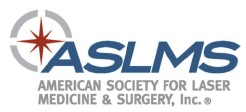Mole Removal at a Glance
What are the benefits of Mole Removal
There are various benefits to this procedure, including:
- Removing protruding moles that get in the way of shaving.
- Reducing skin irritation that can occur when certain moles rub against clothing or jewelry.
- Achieving smoother, clearer skin.
- Enhancing appearance and improving self-esteem.
Most importantly, if a mole is suspected to be pre-cancerous early on, it can often be completely removed before it causes a serious health risk.
Who would best represent an Ideal Candidate for Mole Removal?
Those people who can physically and emotionally benefit from having their mole removed would be considered a good candidate for the procedure. However, people must remember that there are limitations to what cosmetic surgery can do. It is meant for improvement, not perfection and is important to have realistic goals and expectations about mole removal.
Where do I begin?
At Reflections all mole removals are performed by our board certified cosmetic surgeons, if we suspect a suspicious mole that requires a general biopsy we will refer our patient to an outside general dermatologist. To determine if a mole is cancerous, a small portion is examined through a biopsy or microscope analysis. This piece of tissue is usually examined at a pathology lab and the results are sent back to our office.
How is the Mole Removal Performed?
Before the mole is removed, the area is cleansed and then an anesthetic is applied to numb the area. The type of mole being removed determines what technique is used. Depending on the technique, stitches may or may not be used. For excision of the mole, the surgeon uses a scalpel to cut the mole and a border of good skin surrounding it. The surgeon will determine the size of this border. Stitches are placed either deep within the skin, or on the upper surface, depending on the depth of the excision.
For the procedure that involves no stitches, a scalpel is used to shave the mole allowing it to be flush with the surrounding skin. Then using an electrical instrument, the area is cauterized to stop any bleeding. Topical antibiotic is applied to reduce risk of infection. Shaving removes the protruding surface of the mole, but it can leave mole cells beneath the skin and may grow back.
Mole removal typically takes less than an hour to perform, depending on the amount of moles to be removed.
Note: Laser treatment is another method of mole removal. While scarring is not an issue for this technique, it is important to know this is not a method used for treating deep moles because the laser does not penetrate deeply enough.
Please consult with a Reflections board certified cosmetic surgeon to determine which method is best for you.
What should be expected after a mole is removed?
The amount of discomfort afterward varies on the method used. If there is discomfort, it can be relieved with prescribed pain medication. A scab usually will develop, and then heal within a week or two. Also any redness that occurs will disappear within two to four weeks. Most scars that do appear slowly fade over time
What Are the Risks and Limitations of Mole Removal?
While risks are minimal, a possible risk that can occur is infection. The risks associated with mole removal also depend upon the technique used. A common condition that can occur after the excision procedure is scarring. Some scars fade away, but some can be permanent. Scars can be eliminated through skin resurfacing or other scar revision procedures provided by our skincare specialists at Reflections Image Center.


